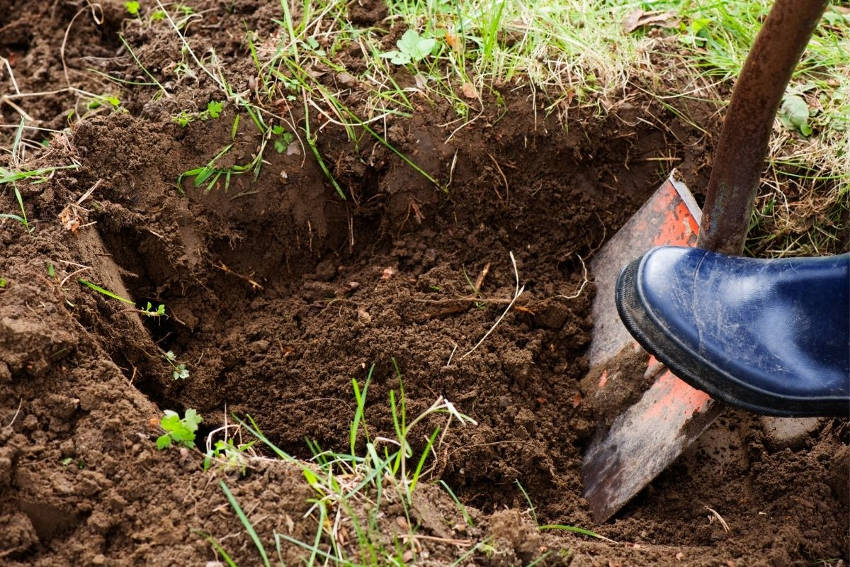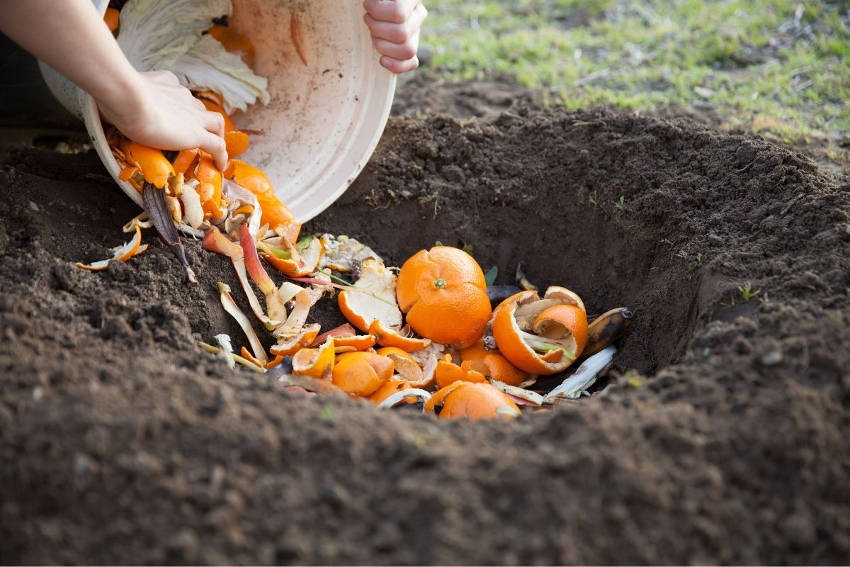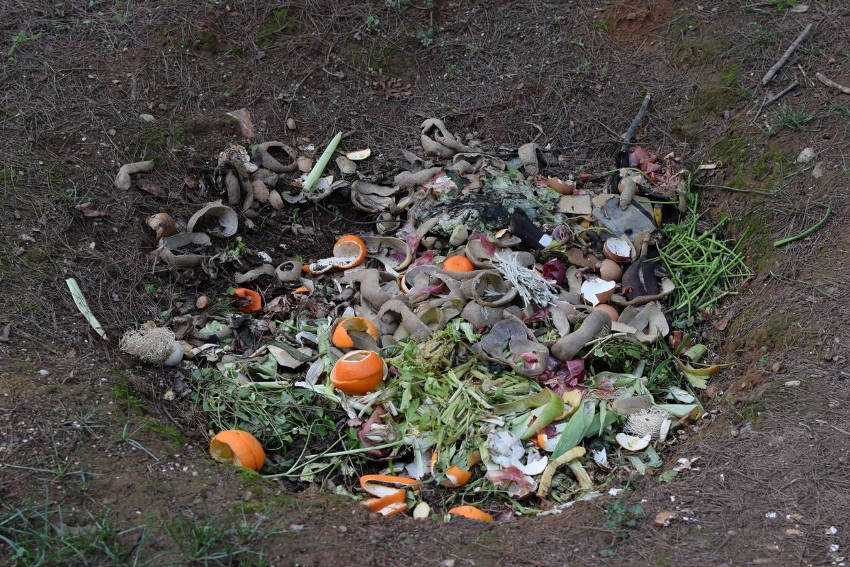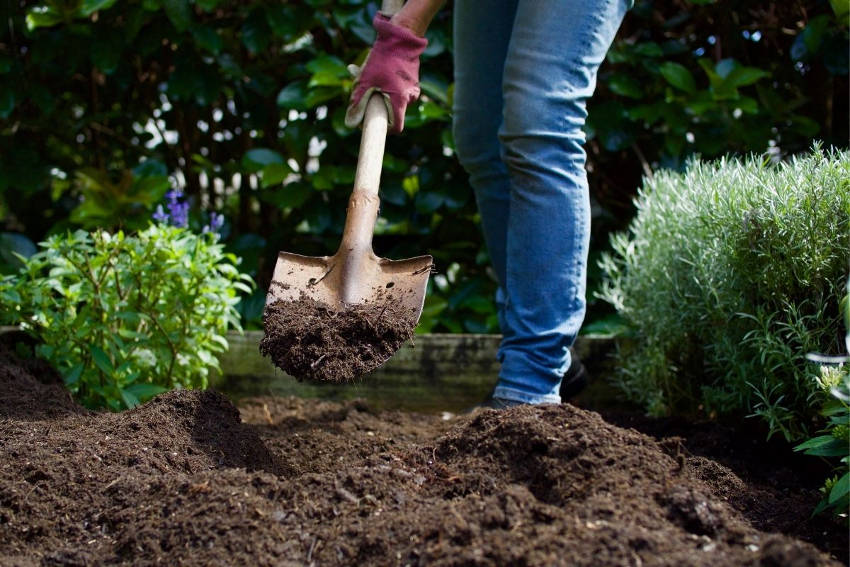Compost is a magic ingredient in the garden, improving soil structure, water retention and organic matter while feeding the microorganisms needed for healthy soil. Add to that compost's role in reducing landfill and recycling nutrients back to the garden, and it's easy to see why making compost is considered an essential part of home gardening.
Compost is typically made in compost bins or bays. However, not everyone has the space or desire for above-ground structures in their gardens. Some gardeners also worry that above-ground bins may attract rodents or produce unwanted odors. That’s where trench composting comes in.
What is Trench Composting?
Trench composting, as the name suggests, involves making compost in a trench dug in your soil rather than in an above-ground bin or bay. The trench is gradually filled with kitchen scraps and other types of garden waste and then covered and left to decompose. While the composting process can take up to a year, the area will then be ideal for growing plants in, with plenty of nutrients in the soil.
Trench composting is particularly ideal for long-term soil improvement or for growing hungry crops. The traditional bean trench, beloved by English allotment gardeners, is basically trench composting done well in advance of planting a row of beans. The method is also suitable to prepare for nutrient-hungry squashes, melons and pumpkins.
How to Trench Compost
You can start trench composting at any time of year. Having said that, many gardeners recommend starting a trench in the autumn, as regular composting is slower over winter and the trench will then be ready for summer crops. Here is a step-by-step guide of what to do:
Step 1
Dig a trench 30-60cm deep, about 60cm wide, and as long as you want.
Step 2
Fill the trench with a mixture of green and brown waste in a roughly 50:50 ratio. Leave at least 15cm at the top to backfill with soil. You can fill the whole trench in one go, or work from one end and fill it gradually over weeks or even months.
Step 3
Water the trench well.
Step 4
Backfill the trench with the original soil you removed from it in step 1. Add an extra 5-10 cm of soil on top as the composted material will compact as it breaks down. If you’re filling the trench gradually, make sure you cover any exposed vegetable scraps at the end of the filled area to deter rodents.
As an alternative to steps 2-4, you may wish to add material in layers and then cover with a bit of soil before adding another layer until the trench is full. You should still leaves the top 5-10 cm of the trench for soil and add the extra 5-10 cm on top.
Step 5
Wait around 6 months before planting on top of the trench, particularly if you want to grow vegetable crops. You can sow a green manure crop on top of the trench while it’s breaking down to further improve the soil.
One method of trench composting on a vegetable plot is to divide the bed into thirds and have two of the thirds for crops and one third for a path which is trench composted. You then move the thirds around each year so each third gets its soil enriched via the trench composting method every three years. You can also trench compost between rows of crops.
There are several variations on traditional trench composting, including dig and drop compost holes, which uses a hole instead of a trench. This technique is particularly useful for composting around mature plants, or if you’re very short on space.
What to Compost
You should aim for roughly a 50:50 mix of green waste and brown waste. While the ratio isn’t as important as for traditional compost making, getting the mix right will speed up the composting process.
Green waste includes fruit and veg scraps from the kitchen, grass clippings, annual weeds that have not set seed, flowers, plastic-free teabags and coffee grounds. Brown material includes dead leaves, small prunings, shredded non-shiny paper, ripped up non-shiny cardboard and straw.
Avoid adding things like meat and fish (unless you are going to bury it at least 70cm deep and leave it for a longer period of time), diseased plants, perennial weeds such as dandelions, or weed seeds.
Advantages of Trench Composting
The main advantage of trench composting is the lack of an unsightly and sometimes a little smelly composting area in your garden. In small gardens composting underground saves valuable space that can be put to use as additional growing area. Trench composting is also incredibly simple and there is no need for the periodic turning that is recommended for a regular compost heap. Similarly, you don't have to get too caught up in the correct ratio of green to brown waste. It also saves labour as you won't have to spread the finished compost as it is already in your soil.
Trench composting is particularly good for plants that like a lot of water or if you live in a dry area, as it will make the soil more moisture-retentive. The digging involved will also help to break up compacted soil.
Disadvantages of Trench Composting
The labour involved in digging the trench is one of this technique’s main drawbacks. While you don’t have to dig a whole trench at once, there will always be some digging involved in the setting-up stage. The other drawback is the space that the method takes up in the garden. It is not recommended that you grow plants on a covered trench immediately, particularly not food crops, so most gardeners wait between 6 months and a year before planting.
Another drawback to this method of composting is that it is mainly anaerobic in nature. This is because there is little air involved in the composting process once you cover the trench over. This type of composting tends to take a bit longer and has a larger negative environmental impact compared to aerobic composting because more methane is released during the process. That said, a small garden trench will not release a large quantity of methane, and it is still usually preferable than sending your green waste to landfill.
Trench composting is a useful soil improvement technique that helps close the loop on garden waste and food scraps in your garden. If you're not attracted to the idea of having compost bins or bays in your garden, why not give trench composting a try?









